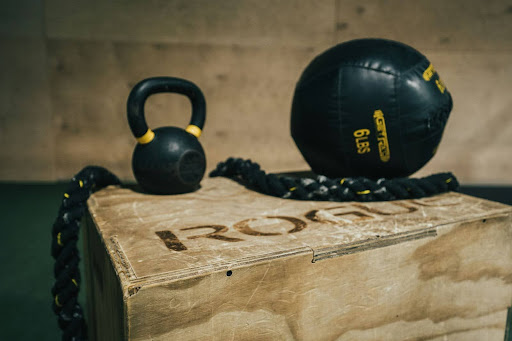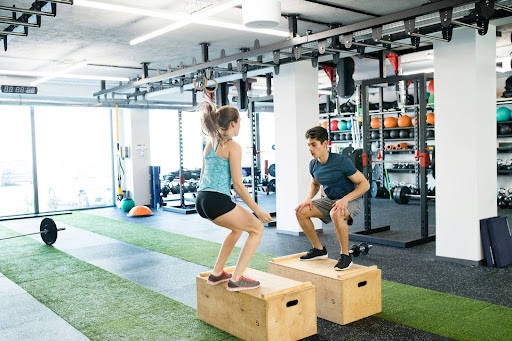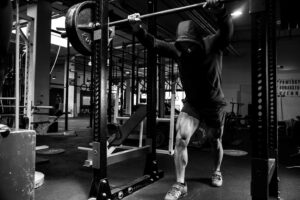
We never thought the childhood activity of jumping ropes or jumping on a trampoline could become a great wholesome form of workout for us later in life. Plyometric boxes better known as Jump boxes or Plyo boxes have become a staple in modern fitness routines. The versatile pieces of equipment are designed to make your workouts more challenging and fun by adding explosive power, agility, and coordination. Whether you are an athlete looking to boost performance or a fitness enthusiast aiming to diversify your routine, jump box techniques can provide significant benefits.
The Science Behind the Plyo Box & its Purpose
A plyo box is a sturdy box or platform that is used for plyometric exercise. The jumping training can be considered a regime of explosive movements designed to increase e muscle power and overall athletic performance.
Started as a sports training program in the 1970s, it slowly became part of the general fitness regimes at my gyms and fitness centres due to its effectiveness in building explosive power, improving agility, and enhancing coordination. Plyo boxes are now making their way to home and garden gyms too. They are beneficial to people who are fitness enthusiasts and want to improve their cardiovascular health, muscle strength, and better overall fitness levels.
Understanding the Jump Box
A jump box is a versatile tool that comes in various types, each designed to suit different training needs and preferences:
- Wooden Jump Boxes: Known for their durability and stability, these boxes are often used in gyms and training facilities.
- Foam Jump Boxes: Made from high-density foam, these boxes are safer for beginners as they reduce the risk of injury from missed jumps, and can be included in your home gyms too.
- Adjustable Jump Boxes: These boxes allow users to change the height, making them suitable for different exercises and skill levels, ideal for garden gyms.
- Stackable Jump Boxes: Designed to be stacked to various heights, these are ideal for progressive training and space-saving storage.
When choosing a jump box, consider factors such as stability, material, and adjustability to ensure it meets your training needs.
Plyometric Box Techniques
Plyo can be a part of your comprehensive fitness program. If you do not enjoy the traditional strength training plan that is made up of slow and controlled movements to build muscle mass. You can try plyo exercise as it involves rapid, explosive movements that target fast-twitch muscle fibres. These techniques can lead to significant improvements in strength, speed, and overall athletic performance.
Key Exercises Using a Plyo Box

Box Jumps
How to Perform Box Jumps:
- Stand facing the box with your feet shoulder-width apart.
- Bend your knees and lower into a squat position.
- Explode upwards, swinging your arms to generate momentum.
- Land softly on the box, ensuring your knees are slightly bent.
- Step down carefully and repeat.
Benefits:
- Increased power and explosiveness
- Improved leg strength and coordination
- Enhanced cardiovascular health
Depth Jumps
How to Perform Depth Jumps:
- Stand on the box with your feet shoulder-width apart.
- Step off the box, landing softly on the ground.
- Immediately jump vertically as high as possible upon landing.
- Repeat the sequence.
Benefits:
- Enhanced explosive power
- Improved reactive strength and speed
Step-Ups
How to Perform Step-Ups:
- Stand facing the box.
- Step onto the box with one foot, driving through your heel.
- Bring the other foot up to meet the first, standing fully on the box.
- Step down one foot at a time and repeat.
Benefits:
- Improved leg strength and balance
- Enhanced coordination and stability
Box Push-Ups
How to Perform Box Push-Ups:
- Place your hands on the box, slightly wider than shoulder-width apart.
- Extend your legs behind you, forming a straight line from head to heels.
- Lower your body towards the box, bending your elbows.
- Push back up to the starting position and repeat.
Benefits:
- Increased upper body strength
- Improved stability and core engagement
Lateral Box Jumps
How to Perform Lateral Box Jumps:
- Stand next to the box with your feet shoulder-width apart.
- Bend your knees and lower into a squat position.
- Explode sideways, landing softly on the box.
- Step down carefully and repeat on the other side.
Benefits:
- Enhanced agility and lateral movement skills
- Improved coordination and balance
Designing a Plyometric Box Workout Routine
Warm-Up
Always warming up before starting plyometric exercises as it will help to prevent injuries and prepare your muscles for intense activity. We suggested warm-up activities like dynamic stretches, light jogging, and bodyweight exercises like squats and lunges.
Workout Structure

A balanced workout should combine plyometric exercises with other strength and conditioning workouts. An example routine might include:
- Box Jumps: 3 sets of 10 reps
- Depth Jumps: 3 sets of 8 reps
- Step-Ups: 3 sets of 12 reps (each leg)
- Box Push-Ups: 3 sets of 15 reps
- Lateral Box Jumps: 3 sets of 10 reps (each side)
Cooldown
Also, it is crucial that you cool down and stretch post-workout for muscle recovery and flexibility. Suggested activities include static stretches, yoga poses, and foam rolling.
Safety Tips and Precautions
To prevent injuries and ensure a safe workout environment, follow these tips:
- Maintain proper form and technique during exercises.
- Start with a lower box height and gradually increase as you gain confidence and strength.
- Wear appropriate footwear with good grip and support.
- Ensure the box is stable and placed on a non-slip surface.
- Focus on balance and control, avoiding rushed or sloppy movements.
Integrating Jump Boxes into Different Fitness Goals
Jump boxes can be tailored to suit various fitness objectives:
- Weight Loss and Fat Burning: High-intensity plyometric exercises boost metabolism and burn calories.
- Athletic Performance: Plyometric training improves speed, power, and agility, benefiting sports performance.
- Strength and Muscle Building: Combining jump box techniques with strength training enhances muscle growth and power.
- Cardiovascular Health: Plyometric exercises elevate heart rate, improving cardiovascular endurance and overall fitness.
Conclusion
Incorporating jump box techniques into your workouts can significantly enhance your fitness journey. The benefits of using a jump box, or plyometric box include improved power, agility, coordination, and overall performance. Whether you are an athlete or a fitness enthusiast, starting or improving a plyometric box workout routine can lead to remarkable results. Consistency and progression are key to achieving your fitness goals. For those looking to get started, consider exploring a range of jump boxes available at Lee Warehouse for high-quality fitness equipment that suits your training needs.




